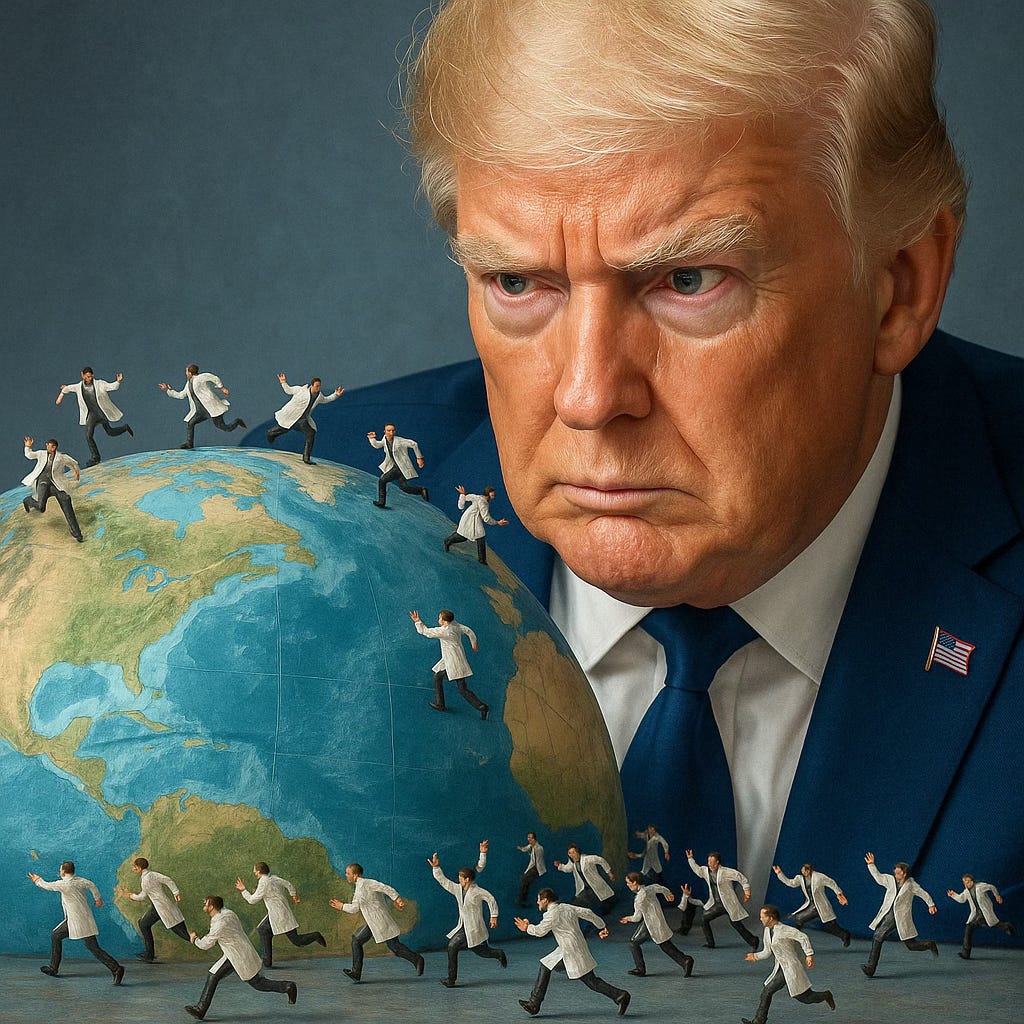- Pascal's Chatbot Q&As
- Posts
- GPT-4o: Trump's renewed efforts to reshape higher education in 2025 have introduced sweeping, coordinated, and deeply controversial policy actions targeting colleges and universities.
GPT-4o: Trump's renewed efforts to reshape higher education in 2025 have introduced sweeping, coordinated, and deeply controversial policy actions targeting colleges and universities.
This essay clusters the actions into five categories, explores their consequences, and proposes what affected institutions and stakeholders might do in response.
Essay: Analyzing Trump’s Higher Education Agenda — Measures, Consequences, and Strategic Responses
by ChatGPT-4o
Introduction
The Trump administration's renewed efforts to reshape higher education in 2025 have introduced sweeping, coordinated, and deeply controversial policy actions targeting colleges and universities. Through unprecedented use of executive power and agency coordination, these measures extend far beyond funding freezes—they signal a fundamental shift in how the federal government relates to academic institutions. Drawing from two articles—“What to Know About Trump’s Funding Threats to Colleges” and “Tracking Trump’s Higher-Ed Agenda”—this essay clusters the actions into five categories, explores their consequences, and proposes what affected institutions and stakeholders might do in response.
I. Clustering the Measures: Trump’s Multi-Pronged Offensive
Weaponizing Federal Funding
Trump has frozen or threatened to freeze billions in federal grants and contracts to elite institutions including Columbia ($400M), Harvard ($2.2B), and Princeton ($210M).
These actions have bypassed traditional due process, legal authority, or procedural transparency, leading to sudden stop-work orders with no formal justification.
Universities have been presented with ultimatums: change internal policies—especially DEI commitments and campus protest rules—or lose funding.
Crackdown on Diversity, Equity, and Inclusion (DEI)
The administration has issued a "Dear Colleague" letter declaring virtually all race-conscious policies and programs unlawful, threatening institutions with defunding.
Executive orders target DEI in both public and private institutions, backed by investigations and lawsuits from conservative-aligned groups.
Antisemitism Task Force and Civil Rights Enforcement
A joint task force spanning multiple agencies has been launched to investigate alleged antisemitism and enforce Title VI compliance—but with overt political bias.
These investigations often appear more aligned with targeting institutions that tolerate pro-Palestinian speech than protecting Jewish students’ rights.
Immigration and International Student Targeting
Nearly 300 international students have had their visas revoked, often without due process.
Students involved in Gaza-related protests are subject to deportation threats, surveillance, and arrests—even green card holders have been targeted.
Institutional Restructuring and Workforce Erosion
Trump’s Department of Government Efficiency (DOGE) has pushed to eliminate or dramatically shrink the Department of Education.
Staff layoffs, student loan management changes, and grant suspensions undermine the administrative machinery of higher ed policy.
II. Consequences of the Measures
A. Legal and Constitutional Erosion
The Trump administration's actions violate norms around federal funding oversight, breach contract law, and appear to infringe upon academic freedom and First Amendment protections. Universities have been subjected to what legal experts call arbitrary enforcement lacking legal justification.
B. Damage to Academic Integrity and Research
Withholding billions in federal research grants risks collapsing long-term scientific efforts, including research into cancer, environmental health, and infectious diseases. Cutting funding undermines the research ecosystem that supports innovation and public health.
C. Chilling Effect on Free Speech and Campus Culture
Colleges are being forced to choose between adhering to core values like inclusivity and losing funding. This creates a chilling effect, with administrators self-censoring or prematurely complying to avoid political targeting.
D. Marginalization of Vulnerable Communities
Actions targeting transgender athletes, DEI programs, and international students disproportionately harm minority populations. These measures roll back decades of civil rights progress and create a hostile educational environment for marginalized groups.
E. Operational and Financial Disruption
The scale of disruption is enormous. Institutions are left without recourse when multimillion-dollar grants are suddenly frozen. Long-term planning becomes impossible, and financial precarity escalates—especially for public and mid-tier institutions with fewer reserves.
III. What Institutions and Stakeholders Could or Should Do
1. Legal Action and Court Challenges
Universities, associations, and civil rights groups must continue to sue to block executive overreach and assert contract law protections.
Lawsuits are already underway challenging the Dear Colleague letter, DEI bans, and funding freezes—these need coordinated support and expansion.
2. Coalition-Building and Public Advocacy
Higher ed leaders must unite in bipartisan coalitions to frame these measures not as ideological disputes but as threats to academic independence and constitutional governance.
Public awareness campaigns can reframe the narrative: from “woke universities” to “research institutions under siege.”
3. Alternative Funding and Donor Mobilization
Institutions should diversify revenue sources, seek emergency philanthropic contributions, and accelerate international partnerships to mitigate the loss of federal funding.
Creating contingency funds for legal defense and research continuity is vital.
4. Compliance Without Capitulation
While some cosmetic or administrative changes might delay funding freezes, institutions must preserve mission-critical values (inclusion, free speech, academic freedom) through internal codes, faculty governance, and alumni engagement.
5. Monitoring and Reporting
Institutions should establish internal task forces to monitor communications from federal agencies, document procedural irregularities, and coordinate rapid legal responses.
Conclusion
The Trump administration’s actions represent not just political antagonism toward higher education, but a strategic effort to redefine what American academia is allowed to be. By weaponizing funding, suppressing speech, dismantling oversight institutions, and eroding civil protections, the administration is attempting to recast universities into instruments of ideological conformity.
To defend academic freedom, constitutional rights, and research integrity, colleges and universities must act with resolve. They must litigate, collaborate, and educate—not only to protect themselves, but to preserve the foundational values of American democracy.
